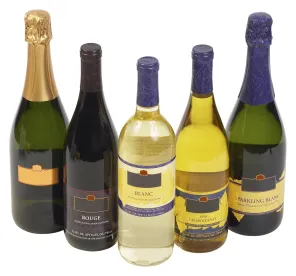The EU reform of Common Agricultural Policy (the CAP), published on 6 December 2021, will enter into force on 1 January 2023. Such reform consists of a number of changes to the existing regulations. These changes may have flow-on effects with other consumer markets.
Specifically, wine labelling will be regulated by EU Regulation 2021/2117, which amended four EU regulations, namely Regulations (EU) Nos. 1308/2013, 1151/2012, 251/2014, and 228/2013. Consultations on modernization of the CAP started in 2017, and the legislative procedure was completed at the end of 2021. While a midterm review will take place in 2025, the CAP is meant to cover the period 2023–2027.
The CAP introduces a number of new provisions to be considered by companies operating in the agricultural and wine sector
The “Electronic” Label
The EU wine industry, unlike food, has not been previously required to list ingredients other than allergens on wine labels. The CAP now introduces such an obligation, with a twist.
The content of physical labels placed on the wine bottle can be limited to a nutrition declaration of the energy value (roughly similar to a declaration of “calories” in the United States) by using the symbol “E.” The full nutrition declaration and ingredient list, however, can be provided by electronic means identified on the label itself, such as with QR codes. There are three limitations to this general rule:
1. A listing of ingredients causing allergies and intolerances must be on the “physical” label;
2. “Electronic” labels cannot contain any other information intended for sales or marketing purposes; and
3. No user data can be collected or tracked through electronic means.
A Socially Responsible Regulation
The CAP has been in existence since 1962, and it is intended (among other things) to provide financial support to farmers in order to ensure a stable supply of affordable food. The newest version of the CAP continues to pay large subsidies to farmers, but it also focuses attention on a number of factors of increasing importance to the European Union:
Workers’ Rights
The European Union funds for farmers will not be granted unless laws establishing the rights of workers and adequate employment conditions are followed.
Environment and Green Energy
EU member states will have to ensure that at least 5% of funds received from the European Union are directed toward projects aimed at achieving environmental protection, energy efficiency, sustainability, and reduction of the environmental impact of the wine sector as a whole.
Greater Competitiveness
Interbranch organizations that bring together farmers, processors, and distributors with geographical indications can now adopt agreements to share value, costs, and profits without being subject to EU competition rules.
Transparency
There has been progress on the lower alcohol content front. Wines with low alcohol content were included among wine-growing products; total de-alcoholization (alcoholic strength less than 0.5%) has been authorized for table wines. However, addition of water and other elements not obtained directly from the de-alcoholization process is not allowed under the CAP.
The Geographical Application
The CAP applies to products placed on the EU market whether they are produced in one of the EU member states or are imported from a third country, including wines produced in the European Union and exported outside of the European Union, including the United States. Wine produced and labelled before 8 December 2023, however, may continue to be placed in the EU market until stocks are exhausted.





 />i
/>i
